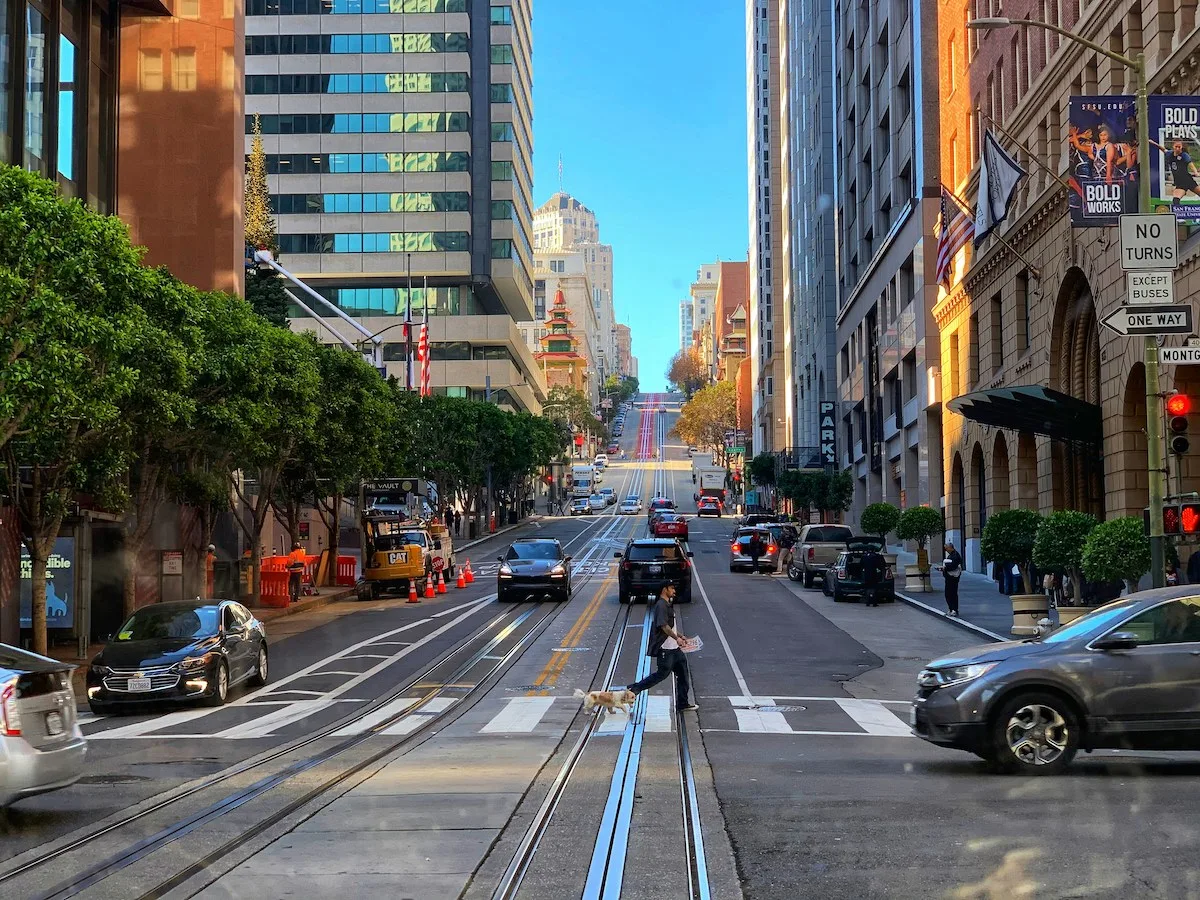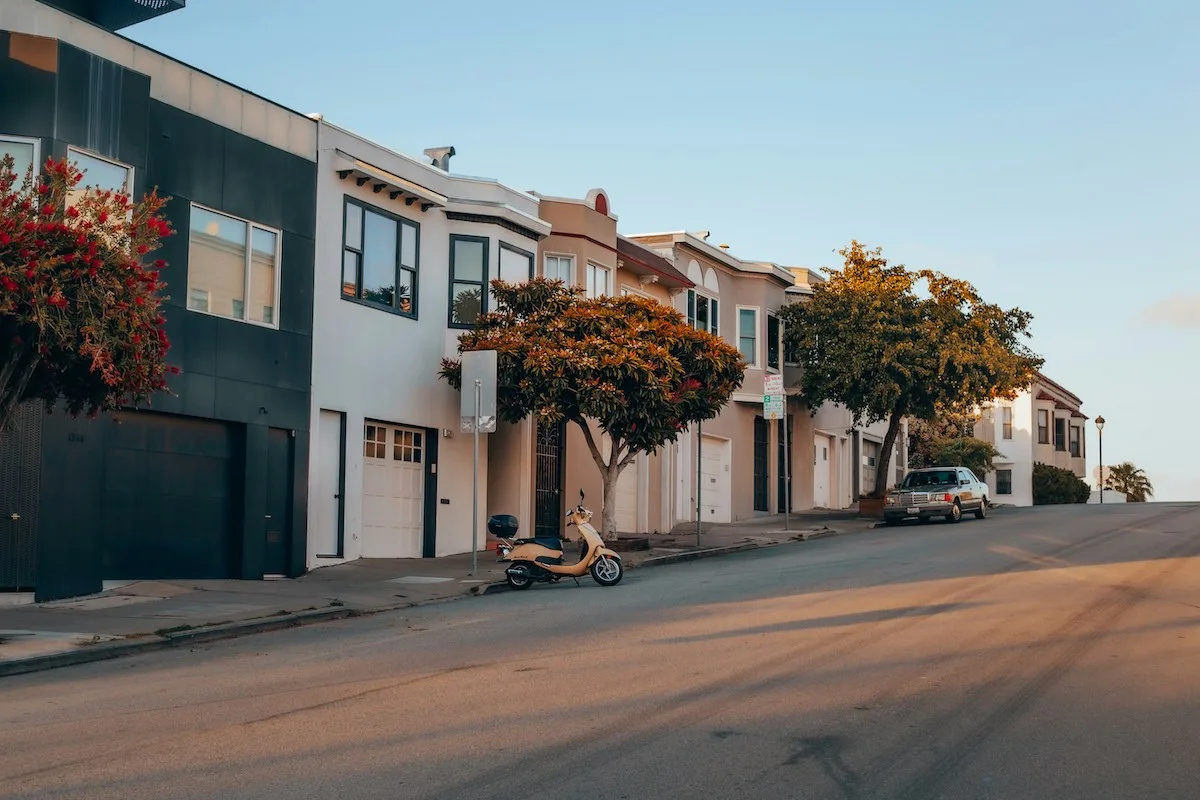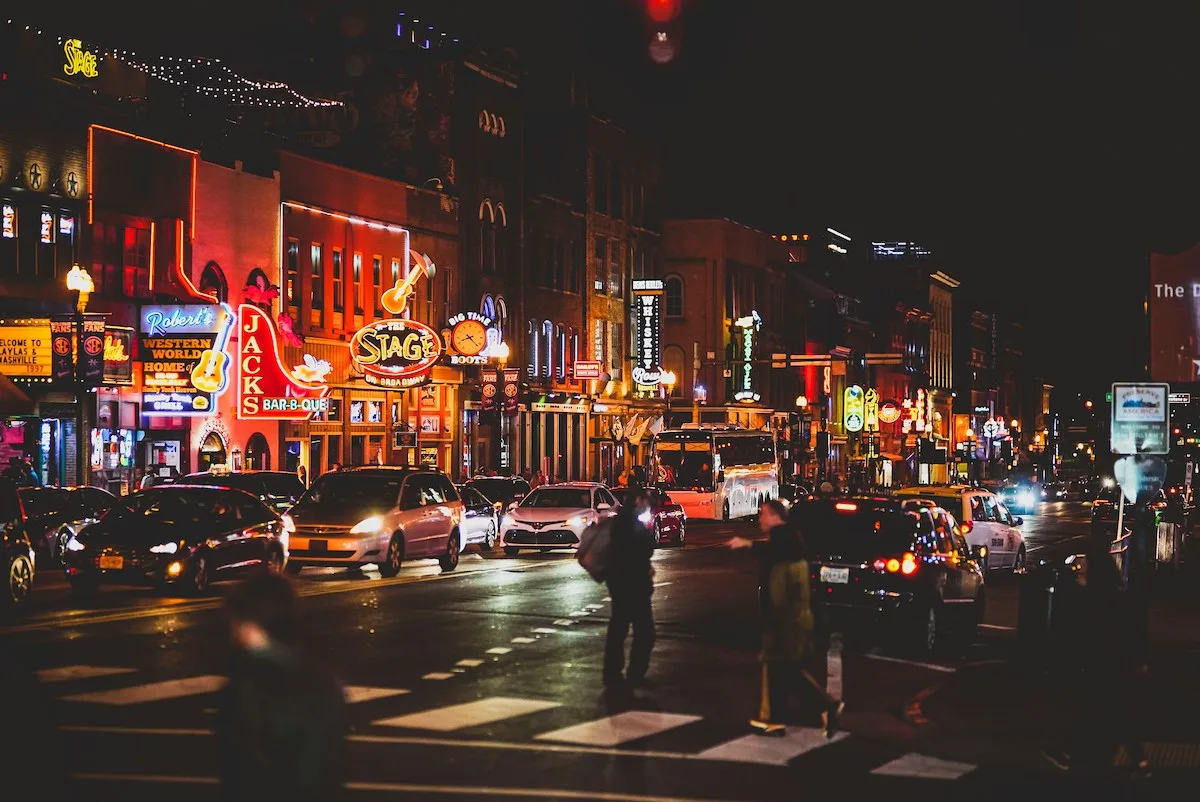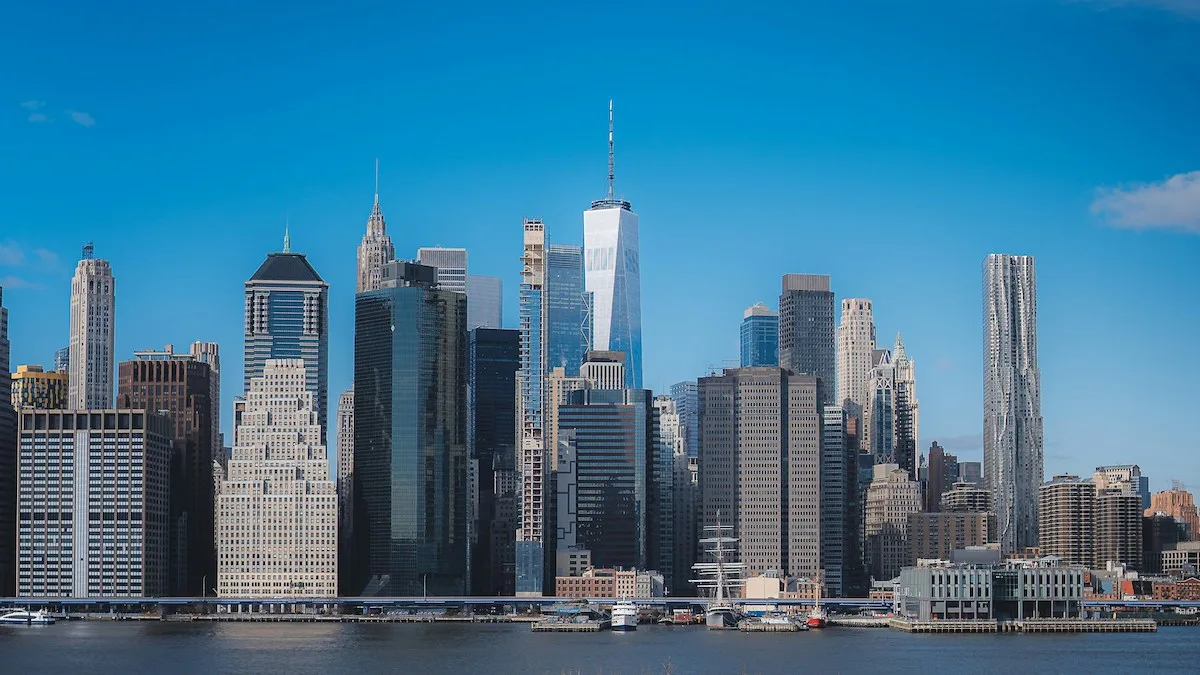No, San Francisco is not affordable for most renters in 2025. The required income to afford median rent ($3,665/month) is $146,600 annually, but the median household earns only $139,801—creating a $6,799 affordability gap that forces most residents to spend well above the recommended 30% on housing.
Yet hundreds of thousands of people still call San Francisco home, finding creative ways to make it work through strategic neighborhood choices, roommate situations, and carefully managed budgets. The reality? Affordability in SF depends heavily on where you live, what you earn, and what lifestyle tradeoffs you’re willing to make.
According to Zumper’s October 2025 rental data, neighborhood rents span an incredible range, from $1,895 in the Tenderloin to $4,595 in the Marina. That $2,700 monthly difference means your choice of neighborhood could save or cost you more than $32,400 per year.
How much do you really need to earn to afford rent in San Francisco?
Financial experts recommend the 30% rule: spend no more than 30% of your gross income on housing, so you can leave enough room in your budget for food, transportation, healthcare, savings, and everything else that makes life livable.
Here’s the math for San Francisco: With a median rent of $3,665 per month across all bedroom types, you’d need a monthly income of $12,217 to stay within the 30% threshold. That works out to $146,600 annually.
The problem? According to the U.S. Census Bureau, San Francisco’s median household income is $139,801. That creates an affordability gap of $6,799—meaning the typical San Francisco household is spending more than 30% of its income on rent just to afford a median-priced apartment.

The income requirements get even steeper when you break it down by apartment size:
- 1-bedroom apartment: Median $3,510 → You need $140,400 annually
- 2-bedroom apartment: Median $5,000 → You need $200,000 annually
- Single-family rental home: Median $4,300 → You need $172,000 annually
There is some good news if you’re in our target demographic. Households aged 25-44 earn a median of $199,547 in San Francisco, according to Census data—significantly higher than the overall population. Young professionals and mid-career workers in SF are much better positioned to afford market-rate rent than the citywide numbers suggest.
Want to see where you stand? Use our rent affordability calculator to calculate your personal budget based on your income.
What are the most affordable and expensive neighborhoods in San Francisco?
Here’s where location strategy becomes crucial for moving to San Francisco on a budget. San Francisco neighborhoods vary by $2,700 per month—that’s the difference between the cheapest SF neighborhood, the Tenderloin, and the most expensive area, the Marina. Choose wisely, and you could save yourself $32,400 every year.
Cheapest San Francisco neighborhoods in 2025
1. Tenderloin — $1,895/month
At 48% below the city median ($1,770 less per month), the Tenderloin requires just $75,800 annually. Yes, it has urban grit and higher crime rates, but it’s incredibly central with access to excellent public transit and some of the city’s best ethnic restaurants. It’s not for everyone, but budget-conscious renters willing to accept the tradeoffs can find affordable Tenderloin apartments and save serious money.
2. Downtown — $2,125/month
Downtown’s rent is 42% below the city median ($1,540 less per month) and requires $85,000 annually. You get excellent transit connections, walkability to jobs and amenities, and true urban living—all at a fraction of what you’d pay in more residential neighborhoods.
3. Central Sunset — $2,748/month
The most expensive of the “affordable” options, Central Sunset is 25% below the city median ($918 less per month) and requires an annual income of $109,900. You’re rewarded with a residential neighborhood feel, proximity to Golden Gate Park and Ocean Beach, and a more relaxed vibe than downtown SF. Explore Central Sunset rentals for a residential alternative.
Most expensive San Francisco neighborhoods in 2025
1. Marina — $4,595/month
The Marina tops the list at $4,595 median rent, 25% above the city median ($930 more per month). You need $183,800 annually to afford it. You’re paying a premium for waterfront views, the Chestnut Street shopping and dining scene, and a younger professional demographic. Browse luxury Marina District apartments if this fits your budget.
2. Pacific Heights — $4,525/month
Pacific Heights commands $4,525, running 23% above the city median ($860 more per month), requiring $181,000 annually. The historic mansions, prestigious addresses, and stunning bay views justify the price for those who can afford it.
3. Cow Hollow — $4,500/month
At $4,500 (23% above the city median, or $835 more monthly), Cow Hollow needs $180,000 annually. You get boutique shopping on Union Street, excellent dining, and easy access to the Marina waterfront.
4. Castro — $4,499/month
The Castro rounds out the top four at $4,499, 23% above the city median ($834 more per month), requiring $180,000 annually. The vibrant LGBTQ+ community, cultural amenities, nightlife, and strong neighborhood identity make it worth the premium for many renters. Discover Castro neighborhood apartments for this iconic district.
Understanding SF geographic rent patterns
There is a clear geographic pattern in SF: Northern waterfront neighborhoods will be most expensive, while downtown neighborhoods often see significant savings compared to the city median. Western neighborhoods like the Sunset provide a middle ground with residential character at more reasonable prices.
Overall, San Francisco rents have climbed 10.73% year-over-year for 1-bedrooms and 17.1% for 2-bedrooms, showing a heated market even as other California metros cool.
Compare neighborhoods by price or browse our complete San Francisco apartments page to explore all options.
What does it actually cost to live in San Francisco beyond rent?
Rent is just the beginning when calculating the actual cost of living in San Francisco. According to the MIT Living Wage Calculator, San Francisco’s overall cost of living runs 66.7% above the national average, making it one of America’s most expensive cities.

Monthly housing costs in San Francisco
Housing: $3,665 (median rent from our data)
That’s just your base rent. Utilities run 60.1% above the national average, so budget another $150-200 monthly for electricity, gas, water, and internet.
Transportation costs: Public transit vs. car ownership
Transportation: $578/month
The good news? San Francisco’s excellent public transit means you can ditch the car. An SFMTA monthly pass costs $85 for Muni-only or $102 for Muni + BART. Single rides are $2.75 with Clipper or MuniMobile. If you qualify as low-income, the Lifeline Pass is just $43/month—a significant savings.
According to MIT’s calculator, transportation averages $578 monthly ($6,936 annually) when you factor in occasional rideshares, bike maintenance, or car rentals. But here’s the silver lining: San Francisco has a Walk Score of 99, ranked as a “Walker’s Paradise.” Going car-free saves you $8,000-12,000 annually compared to car ownership with parking, insurance, and gas.
Food and essential expenses
Food: $489/month
The MIT Living Wage Calculator estimates $5,865 annually ($489/month) for groceries. Keep in mind that groceries in San Francisco run 23.6% above the national average, and dining out costs substantially more. But the city’s incredible food scene spans all price points—from $2 tacos in the Mission to world-class Michelin restaurants.
Healthcare & other essentials
Healthcare costs run 27.6% above the national average according to MIT’s data, though many SF employers offer solid health insurance as part of their benefits packages.
Add personal care, clothing, household items, entertainment, and phone bills, and you’re looking at several hundred more per month. When you add it all up, living in San Francisco as a single adult could cost roughly $5,100-$5,500 per month, based on these estimations. Using the 30% rule in reverse, that means you’d need to earn around $204,000 annually to afford everything comfortably.
The reality? Most San Francisco renters spend 40-50% of their income on housing alone, then squeeze the rest of their budget to make it work.
Here are a few examples of budgeting scenarios you might encounter in San Francisco:
- College student/entry-level worker: Roommates in the Sunset splitting a 2-bed ($2,500 total = $1,250 each) + transit pass + minimal expenses = ~$2,200-2,500/month minimum
- Young professional: 1-bedroom in a moderate neighborhood ($3,510) + full living expenses = ~$5,500/month
- Established professional: Nice 1-bedroom or 2-bedroom solo ($4,000-5,000) + comfortable lifestyle = ~$7,000-8,000/month
Run your own numbers with our San Francisco rent calculator to see what budget makes sense for your situation and lifestyle.
How does San Francisco compare to Los Angeles, Anaheim, and the national average?
San Francisco’s rent premium becomes crystal clear when you compare it to other California cities and the nation as a whole.
San Francisco vs. Southern California:
Los Angeles has a median rent of $2,685 according to our data. That makes San Francisco 36.5% more expensive—a difference of $980 per month or $11,760 annually. Interestingly, LA rents are trending down (-8.98% year-over-year) while SF rents climb.
Anaheim sits at $2,495 median rent, making SF 46.9% more expensive (+$1,170/month). That’s $14,040 more per year to live in San Francisco. Anaheim has also seen slight rent decreases (-2.54% year-over-year).
Long Beach offers the biggest contrast at $2,095 median rent. San Francisco is a staggering 74.9% more expensive—that’s $1,570 more per month or $18,840 more annually. Long Beach rents have remained flat (0% year-over-year change).
San Francisco rent vs national average:
The gap widens even further when you compare SF to the rest of America:
- 1-bedroom national median: $1,517 vs. San Francisco’s $3,510 — SF is 131% more expensive (+$1,993/month)
- 2-bedroom national median: $1,894 vs. San Francisco’s $5,000 — SF is 164% more expensive (+$3,106/month)
Why does San Francisco have such high rent prices?
The wage differential helps explain it. According to the Bureau of Labor Statistics, the SF metro area’s average wage is $48.15/hour compared to $32.66 nationally—a 47% wage premium. Tech industry concentration, limited geography (the city is confined to a 7×7 mile peninsula), and constrained housing supply all drive both rents and salaries higher.
The tradeoff calculation:
Even with $1,570/month savings by moving to Long Beach, would you earn $18,840+ more annually working in San Francisco? For tech workers, finance professionals, and legal specialists, the answer is often yes. For service workers, teachers, and creative professionals, the math gets much harder to justify.
San Francisco is also experiencing faster rent growth than its Southern California counterparts. Our data shows 1-bedrooms up 10.73% year-over-year and 2-bedrooms up 17.1%, while LA and Anaheim see declines. The SF rental market trends remain heated even as other metros cool.
Check out our National Rent Report to see how other cities compare.

What salary do you need to afford rent in San Francisco in 2025?
Let’s talk real numbers. Here’s exactly what you need to earn to afford different types of housing in San Francisco using the 30% rule:
| Apartment Type | Median Rent | Required Annual Income |
|---|---|---|
| 1-Bedroom | $3,510 | $140,400 |
| 2-Bedroom | $5,000 | $200,000 |
| All Types Median | $3,665 | $146,600 |
| Single-Family Home | $4,300 | $172,000 |
Now let’s see which San Francisco jobs actually pay enough to afford these rents.
Careers that can comfortably afford 2-bedrooms ($200k+ needed):
According to the Bureau of Labor Statistics wage data from May 2024:
- Legal occupations: $99.50/hour ($206,960 annually)
- Management positions: $93.40/hour ($194,272 annually)
- Computer & Mathematical: $78.40/hour ($163,072 annually) — barely reaches 1-bedroom comfort level
Careers that can afford 1-bedrooms ($140K+ needed):
- Healthcare practitioners (physicians, dentists, nurse practitioners)
- Architecture & Engineering professionals
- Business & Financial operations specialists
- Two service workers, who combine incomes
Careers requiring roommates or rent-controlled units:
- Food service workers: $22.30/hour ($46,384 annually)
- Healthcare support staff: $21.70/hour ($45,136 annually)
- Retail workers (often below $20/hour)
For these essential workers, affording San Francisco means finding apartments with roommates, securing rent-controlled apartments, or qualifying for affordable housing programs. A food service worker earning $46,384 would need to spend nearly 91% of their income to afford a median 1-bedroom alone, which clearly demonstrates a rent burden.
Reality check by target audience:
College students:
Part-time earnings of $15-20/hour won’t cut it alone. Your strategy: multiple roommates, family support, or student housing. The good news? A Tenderloin apartment at $1,895 split three ways is just $632 per person, which may actually be manageable.
Entry-level professionals:
Starting salaries of $60-90k mean you’ll need roommates, live in outer neighborhoods, or have longer commutes. That 1-bedroom requiring $140k is typically 2-3 years of career progression away.
Established professionals:
This is where the numbers finally work. The median income for this age group is $199,547—comfortably above what you need for most SF apartments. This demographic is the target market for those $3,500-5,000/month units.
Dual-income households:
Two professionals, each earning $75k, combine for $150k—enough to access median-priced apartments and the most common renter profile in San Francisco.
Visit our San Francisco rent research page to explore more salary trends and income requirements across the city.
How to find affordable housing in San Francisco: Programs and resources
If market-rate rents feel out of reach, San Francisco offers several programs that can help make the city more affordable.
Below Market Rate (BMR) housing:
The Mayor’s Office of Housing and Community Development manages BMR housing units priced for households earning 55-120% of Area Median Income (AMI).
Apply through the DAHLIA San Francisco Housing Portal—the centralized system for all affordable housing applications and lotteries. Selection is lottery-based, so apply to multiple opportunities simultaneously. Call the Housing Hotline at 415-701-5500 for assistance.
Income eligibility examples (2025 AMI estimates):
- 50% AMI (single person): ~$58,000
- 80% AMI (single person): ~$93,000
- 120% AMI (single person): ~$140,000
- Limits increase with household size
Section 8 & rental assistance:
The San Francisco Housing Authority administers Section 8 Housing Choice Vouchers that subsidize the gap between what you can afford and market rent. They also manage public housing units. Be warned: waitlists are long, so apply as early as possible. Priority goes to extremely low-income households, seniors, and people with disabilities.
Transportation savings:
The SFMTA Lifeline Pass costs just $43/month (versus $85 regular) for households earning ≤200% of the federal poverty level. That’s $504 saved annually on transit costs.
Rent control protections:
Buildings constructed before June 1979 are rent-controlled in San Francisco, with annual increase limits (typically 2-3%) and eviction protections. Always ask landlords whether a unit is rent-controlled before signing—it can make a huge difference in long-term affordability.
Application strategy:
Apply to multiple BMR lotteries simultaneously through DAHLIA, build rental history in a market-rate unit while waiting (even if it means temporarily with roommates), and consider nonprofit roommate-matching programs for immediate relief while you wait for affordable housing opportunities.
When is the best time to rent an apartment in San Francisco?
December is the best time to rent in San Francisco for cheaper rent. This is when prices are lowest. Timing your lease signing can save you close to $1,000 per year—here’s when to make your move for the best rental deals.
- Best time to sign a lease: December. According to our rental data, December is the sweet spot when rents average 2.03% below the yearly median. On a $3,665 median apartment, that’s roughly $74/month savings or $888 annually compared to signing in peak season.
- Worst time to sign: July. July is peak rental season when prices climb 2.17% above the yearly median—about $80/month more than average. That’s $960 extra per year compared to a December lease.

Why are there seasonal rent patterns in SF?
December is the landlord’s slow season. Holidays reduce moving activity, creating fewer competing renters and more motivated landlords trying to fill vacancies. You’ll have more negotiating leverage for concessions like waived deposits or free parking.
July hits peak competition. The summer moving season combines with college students seeking fall housing, corporate relocations tied to fiscal year changes, and pleasant weather that encourages moves. Expect bidding wars in desirable neighborhoods.
San Francisco month-by-month renting strategy:
- Avoid June, July, August and September (when college cycles and new graduates flood the market)
- Target a move in November, December, January, or February (post-holiday lull with willing negotiators)
- Months with moderate pricing include March, April, May, October (shoulder seasons with regular activity)
Additional timing tips:
- Mid-month move-ins give you more flexibility than battling for September 1st availability.
- Start your search 60 days in advance for optimal selection without desperation.
- Schedule weekday viewings to face less competition than weekend open houses.
The potential savings add up: A December lease versus a July lease on a median 1-bedroom ($3,510) could save you $800-1,000 in the first year and $1,600-2,000 over a 2-year lease term.
Set up rent alerts on our San Francisco apartments page to catch seasonal deals when they appear.
Is San Francisco worth the cost? Quality of life factors for renters
San Francisco is worth the cost to some renters, but not to all, and it depends on how much you make, what you value, and what you’re willing to sacrifice.
After all these numbers, let’s talk about what you actually get for your money in San Francisco.
Walkability and transportation benefits
San Francisco earned a Walk Score of 89—ranked as America’s “Most Walkable City” and designated a “Walker’s Paradise.” Potrero Hill scores 20/20 on the EPA National Walkability Index, placing it in the top 5% nationally.
What does this mean for your wallet? Car ownership is optional, saving you $8,000-12,000 annually in car payments, insurance, parking, gas, and maintenance. Comprehensive public transit—Muni, BART, Caltrain, ferries—plus bike-friendly infrastructure means you can live car-free comfortably.
Career opportunities and wage premiums
San Francisco’s average wage of $48.15/hour beats the national average of $32.66 by 47%, according to the Bureau of Labor Statistics. Major employers include Visa ($655B market cap), Salesforce ($268B), Wells Fargo, and UCSF Medical Center.
The concentration of tech, finance, biotech, and healthcare industries means career acceleration opportunities you won’t find in cheaper cities. That wage premium often compensates for—and exceeds—the higher rent.
Cultural value and lifestyle amenities
You get world-class food spanning every price point and cuisine, diverse neighborhoods each with distinct character, a year-round mild climate (no AC needed = utility savings), and access to both urban amenities and nature. Golden Gate Park, Ocean Beach, the Bay Trail, and nearby hiking are all at your doorstep. Arts, music, museums, and events happen constantly.
The tradeoffs you’re making:
Progressive policies, including strong worker and renter protections, LGBTQ+ friendly culture, an intellectual and creative community, and international city amenities packed into compact, walkable geography, all add up to something more challenging to quantify but deeply valuable.
What you sacrifice:
- Space: SF apartments run significantly smaller than the national averages
- Homeownership: Median home prices around $1.5M put ownership out of reach for most
- Savings rate: High rent limits wealth-building potential
- Urban challenges: Visible homelessness and cleanliness issues in some neighborhoods
Who might thrive in San Francisco:
- Young professionals (ages 25-44, earning $199K median) who prioritize career over space
- Car-free lifestyle enthusiasts who value walkability
- Industry specialists in tech, finance, and biotech who command premium salaries
- Culture seekers are willing to pay for urban amenities
- Those who can leverage the 47% wage premium
Who might struggle:
- Service workers, teachers, and artists without high incomes
- Families needing 3 or more bedrooms
- Those seeking homeownership or aggressive savings
- Car-dependent renters
The Verdict: Is San Francisco worth the cost?
San Francisco is worth the cost if you’re earning the premium wages the market offers and you value urban density, walkability, and cultural access over suburban space and homeownership.
Think about it this way: You’d save $1,570/month living in Long Beach, but would you earn $18,840+ more annually working in San Francisco? For many professionals in the right industries, the answer is yes—making SF not just affordable, but financially advantageous.
Use our rent affordability calculator to model your personal cost-benefit equation.
Key Takeaways: San Francisco rent affordability 2025
Before you make your decision, remember these critical points:
- Neighborhood choice matters most. You could save up to $32,400 annually by choosing the Tenderloin ($1,895) over the Marina ($4,595)
- Timing saves money. December leases cost $888/year less than July peak season, on average
- Wage premium can help offsets costs. SF workers earn 47% more ($48.15/hour vs. $32.66 national average)
- Car-free living can help you save. Going without a car saves $8,000-12,000 annually, thanks to excellent transit
- Affordable housing does exist, even if it is limited. BMR programs, Section 8, and Lifeline transit passes help bridge the gap
- Roommates work. Splitting a 2-bedroom saves $1,010/month vs. solo 1-bedroom living
The bottom line: Can you actually afford San Francisco in 2025?
No, San Francisco is not affordable by traditional standards in 2025. With a required income of $146,600 to afford median rent and an actual median household income of $139,801, most San Franciscans are spending well above the recommended 30% on housing.
But affordability isn’t one-size-fits-all—it’s deeply situational.
You CAN likely afford San Francisco if you:
- Earn $140K+ individually or $150K+ as a household
- Work in high-paying industries like tech, finance, legal, or management
- Fall into the 25-44 age bracket (median income $199,547)
- Accept spending 35-40% of income on housing
- Choose affordable neighborhoods strategically
You’ll have a harder time paying for rent in San Francisco if you:
- Earn under $75K individually
- Work in service, education, or creative fields without wage premiums
- Need a large space or have a family with children
- Aren’t willing to have roommates or live in outer neighborhoods
Ready to search for a San Francisco apartment? Take action now:
Calculate your personal affordability with our free rent calculator
Search San Francisco apartments filtered by your budget and neighborhood preferences
Explore neighborhood guides to find the best value for your lifestyle
Set up rent alerts to catch deals the moment they hit the market
San Francisco demands financial sacrifice, but for the right career stage and lifestyle preferences, the city’s opportunities, culture, and earning potential can absolutely justify the premium. The question isn’t whether SF is affordable in the abstract—it’s whether it’s affordable for you.
Frequently asked questions about San Francisco rent affordability:
What salary do I need to afford rent in San Francisco?
You need to earn approximately $146,600 annually to afford San Francisco’s median rent of $3,665 per month using the 30% income rule. For a 1-bedroom specifically, you’d need $140,400 annually, and for a 2-bedroom, you’d need $200,000 annually.
What are the cheapest neighborhoods to rent in San Francisco in 2025?
The most affordable San Francisco neighborhoods are Tenderloin ($1,895 median), Downtown ($2,125), and Central Sunset ($2,748). These neighborhoods offer rents 25-48% below the citywide median, providing significant savings opportunities for budget-conscious renters.
Is San Francisco more expensive than Los Angeles?
Yes, San Francisco rent is 36.5% more expensive than Los Angeles. SF’s median rent is $3,665 compared to LA’s $2,685, a difference of $980 per month or $11,760 annually. However, SF wages are also significantly higher, with average hourly wages 47% above the national average.
When is the best month to rent an apartment in San Francisco?
December is the best time to rent in San Francisco, with prices averaging 2.03% below the yearly median. Avoid July, when rents peak at 2.17% above the annual average. Signing in December versus July can save you approximately $888 per year on a median-priced apartment.
What is the median rent in San Francisco in 2025?
As of October 2025, the median rent in San Francisco is $3,510 for a 1-bedroom apartment, $5,000 for a 2-bedroom, and $3,665 across all apartment types. Rents have increased 10.73% year-over-year for 1-bedrooms and 17.1% for 2-bedrooms.
Does San Francisco have affordable housing programs?
Yes, San Francisco offers Below Market Rate (BMR) housing through the DAHLIA San Francisco Housing Portal, Section 8 vouchers through the San Francisco Housing Authority, and the Lifeline Pass transit discount ($43/month for low-income residents). Income eligibility varies by program and household size.
How does San Francisco rent compare to the national average?
San Francisco rent is 131% higher than the national average for 1-bedrooms ($3,510 vs. $1,517) and 164% higher for 2-bedrooms ($5,000 vs. $1,894). However, SF wages are also 47% higher than the national average ($48.15/hour vs. $32.66/hour), helping offset some of the cost difference.



